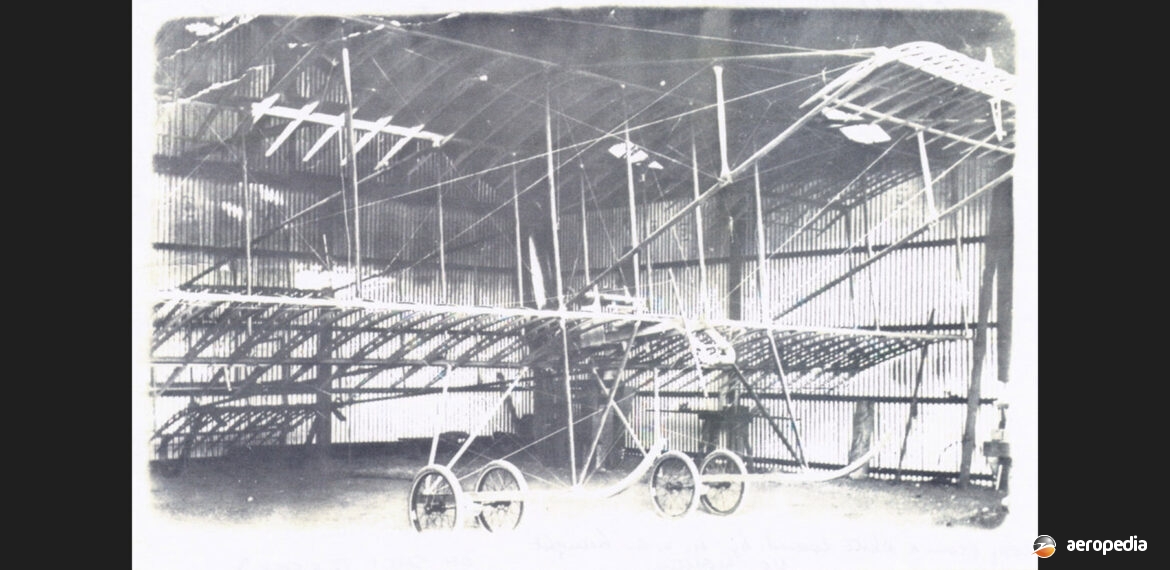Photograph:
Wittber Biplane under construction at Dulwich in about 1912 (Playford Library Service Heritage Collection)
Country of origin:
Australia
Description:
Light biplane
Power Plant:
One 16 kw (24 hp) Anzani three-cylinder air-cooled radial engine
Specifications:
- Wingspan: 11.58 m (38 ft)
- Length: 12.03 m (39 ft 6 in)
- Height: 3.10 m (10 ft 2 in)
History:
Mr Carl Wilhelm Wittber (1879 – 1970) built a biplane which was similar in appearance to a Farman, known as the Wittber Biplane or Wittber Boxkite. The engine fitted, a three-cylinder Anzani, had previously been fitted to a Bleriot XI imported by Mr F J Jones of Adelaide. This latter machine had been destroyed by fire whilst in storage and the engine was rebuilt for the Wittber machine.
Mr Wittber built a hangar at his property in Dulwich, SA, where he built the aeroplane. His aim was to build a machine for carrying out tests and experiments, but not for sustained flight. He also inn 1915 designed and built a 41 kw (55 hp) engine along the lines of a six-cylinder Anzani radial with a 105 mm bore and 120 mm stroke. Weight of this engine was 105.4 kg (232.5 lb) and it normally ran at 1,240 rpm. Whilst work was proceeding on completing this engine the three-cylinder Anzani was installed for early tests with the aeroplane.
After completion the aeroplane was dismantled in 1914 and transported by a horse-team to Smithfield, SA and re-erected. At this time Harry Butler of Minlaton assisted in the installation of the six-cylinder engine. Taxiing trials were carried out and “a few short hops a few feet off the ground, then back on to the landing wheels” were performed.
In September 1915 the military authorities gave notice that tests and experiments were to cease and further work came to an end. It was about this time the Central Flying School at Point Cook, VIC was offered a number of aeroplanes to train military pilots, including the Wittber design. However, it was rejected as not suitable.
The hangar was sold and the aeroplane dismantled. Later the aircraft, with the patterns and drawings, was burnt. The six-cylinder engine was later fitted to a couple of other aeroplanes but eventually the aluminium parts were removed and melted down. Some of the engine has survived and efforts have been made to complete it for display. At one stage it was in storage in the Melbourne Museum of Technology in Victoria.

